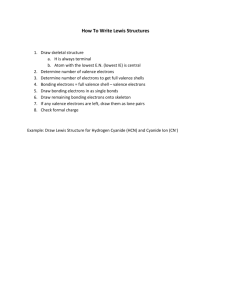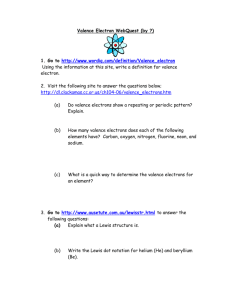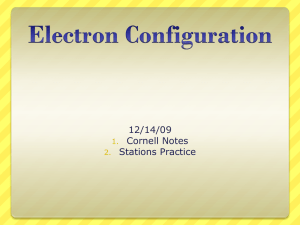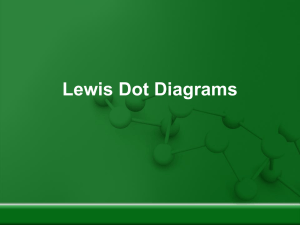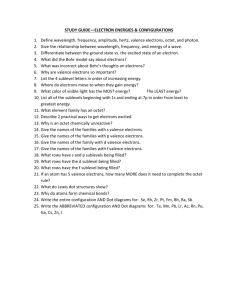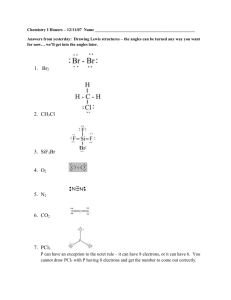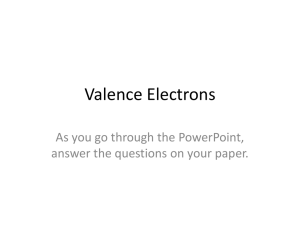Name: Pd: _ Date 1: 12/1/14 1) Which group has properties of both
advertisement
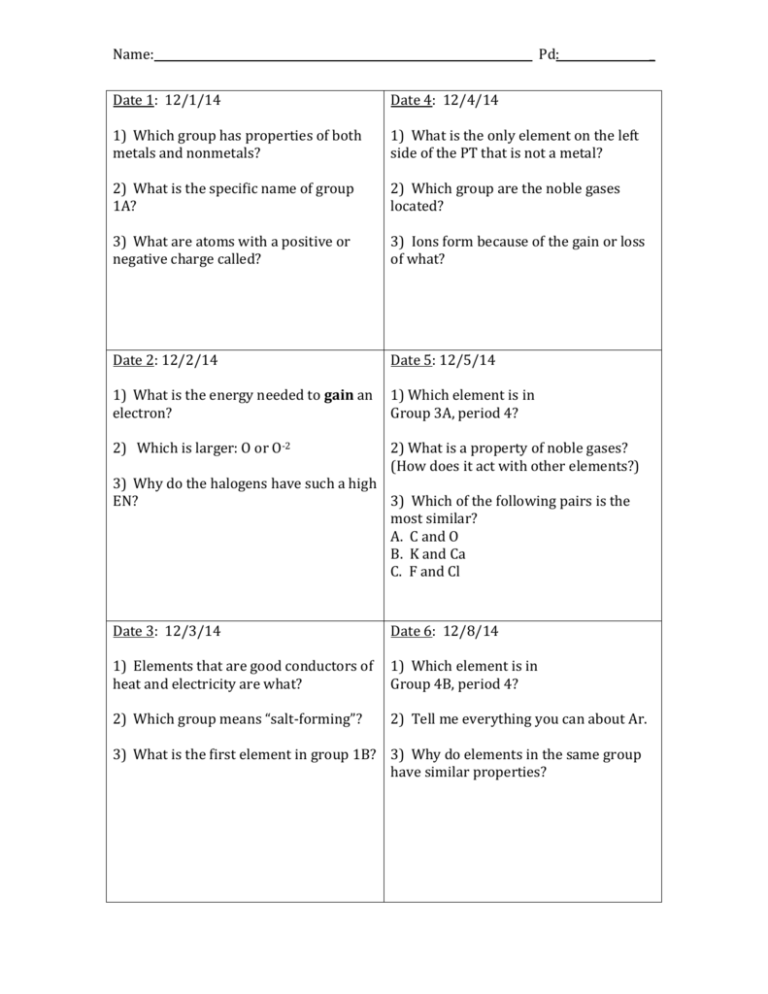
Name: Pd: Date 1: 12/1/14 Date 4: 12/4/14 1) Which group has properties of both metals and nonmetals? 1) What is the only element on the left side of the PT that is not a metal? 2) What is the specific name of group 1A? 2) Which group are the noble gases located? 3) What are atoms with a positive or negative charge called? 3) Ions form because of the gain or loss of what? Date 2: 12/2/14 Date 5: 12/5/14 1) What is the energy needed to gain an electron? 1) Which element is in Group 3A, period 4? 2) Which is larger: O or O-2 2) What is a property of noble gases? (How does it act with other elements?) 3) Why do the halogens have such a high EN? 3) Which of the following pairs is the most similar? A. C and O B. K and Ca C. F and Cl Date 3: 12/3/14 Date 6: 12/8/14 1) Elements that are good conductors of heat and electricity are what? 1) Which element is in Group 4B, period 4? 2) Which group means “salt-forming”? 2) Tell me everything you can about Ar. 3) What is the first element in group 1B? 3) Why do elements in the same group have similar properties? _ Name: Pd: Date 7: 12/10/14 Date 10: 12/16/14 1) Which element is in Group 6A pd 3? 1) How many valence electrons does F have? 2) Which group is named because it contains elements with a wide range of properties? 3) Which group has full s and p orbitals? _ 2) Draw the electron dot structure of F. 3) What is the charge of the F ion? Date 8: 12/11/14 Date 11: 12/17/14 1) What rule states that compounds will form so that they have a noble gas configuration (8 valence electrons)? 1) How many valence electrons does Mg have? 2) How many valence electrons does O have? 3) Draw the electron dot structure for O. 2) How many core electrons does Mg have? 3) What is the charge of the Mg ion? Date 9: 12/15/14 Date 12: 12/18/14 1) How many valence electrons does Mg have? O? 1) How many valence electrons does Cl have? 2) How many electrons must Mg lose to gain an octet? How many must O gain? 2) How many core electrons does Cl have? 3) What charge does the Mg ion have? O? 3) What is the charge of the Cl ion?
